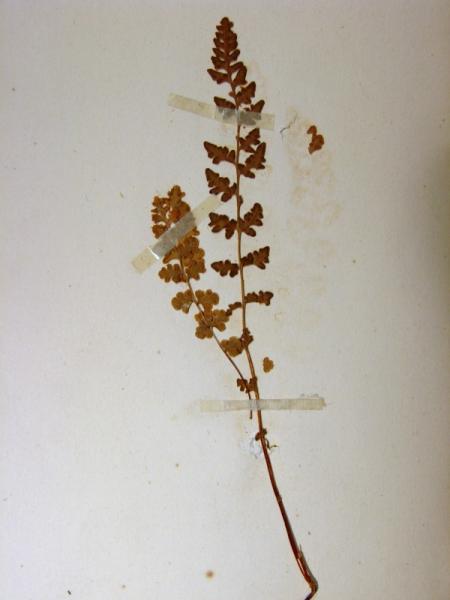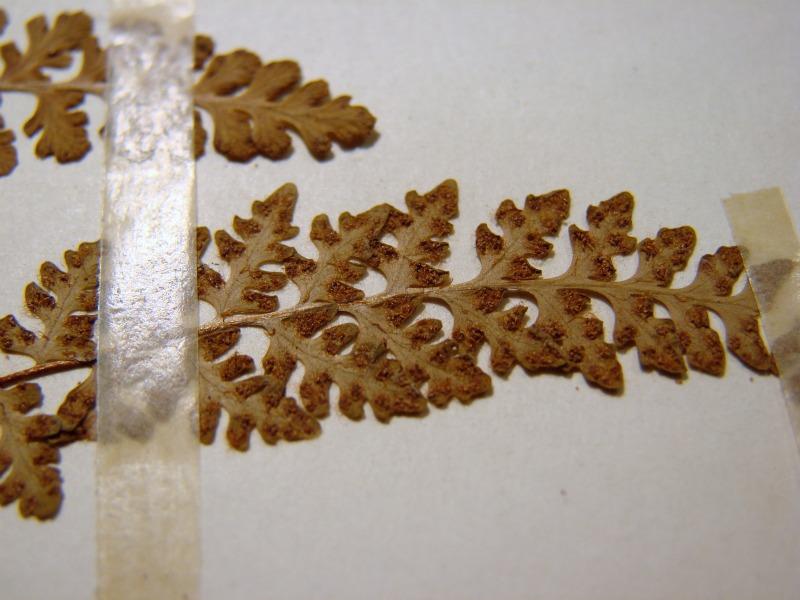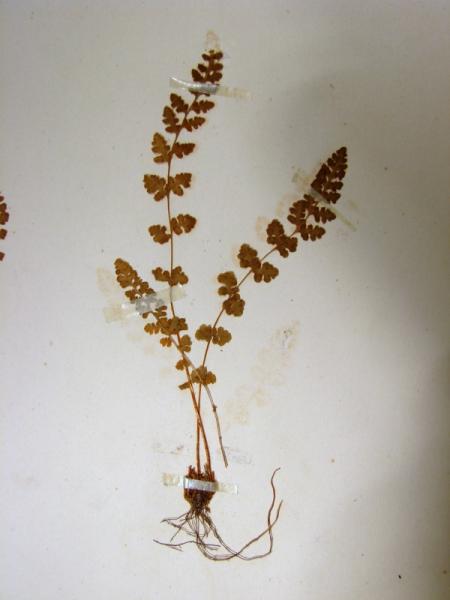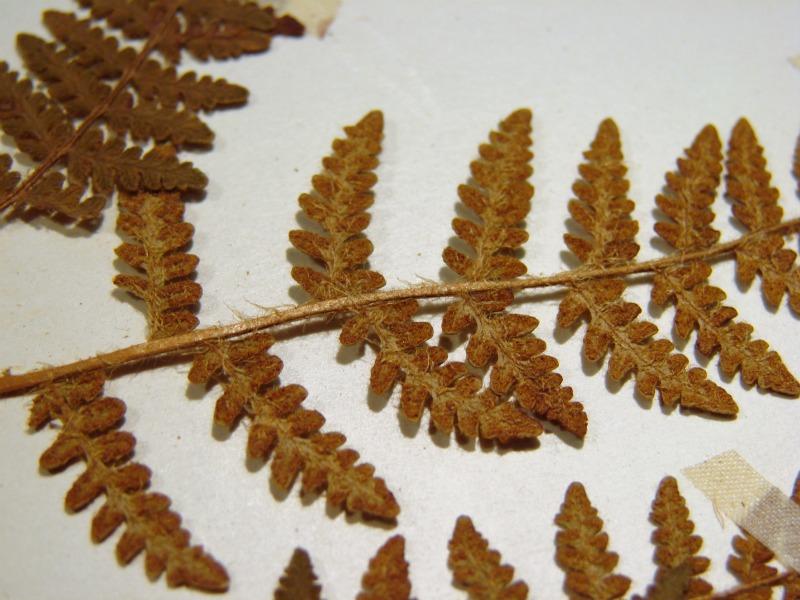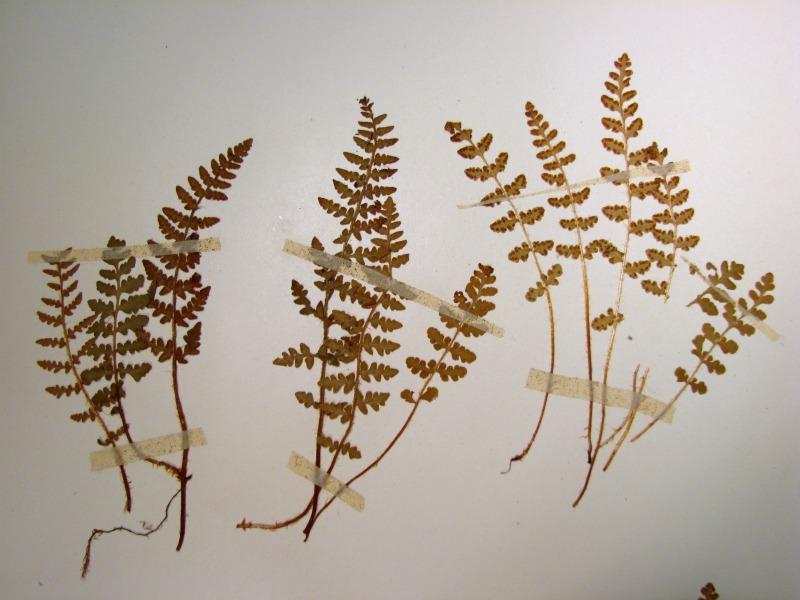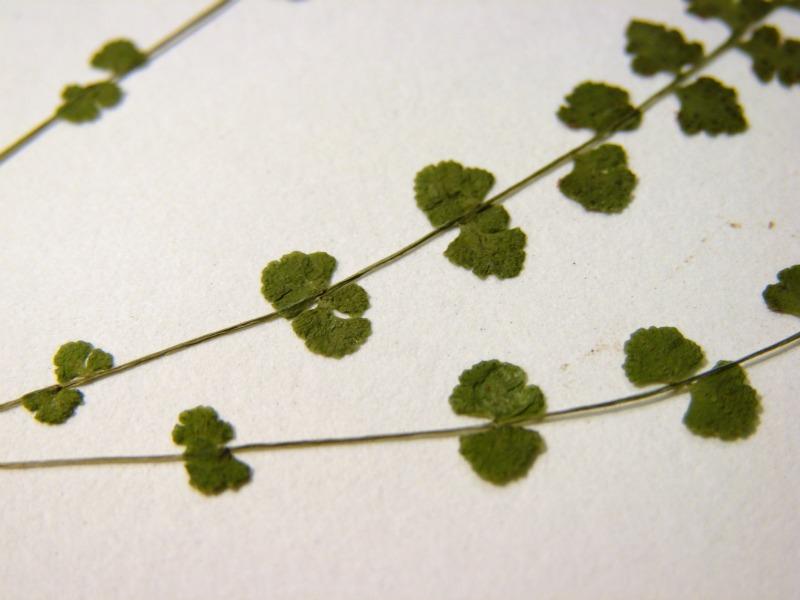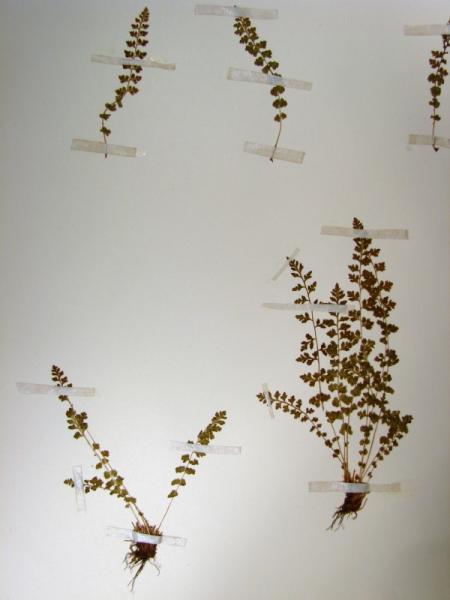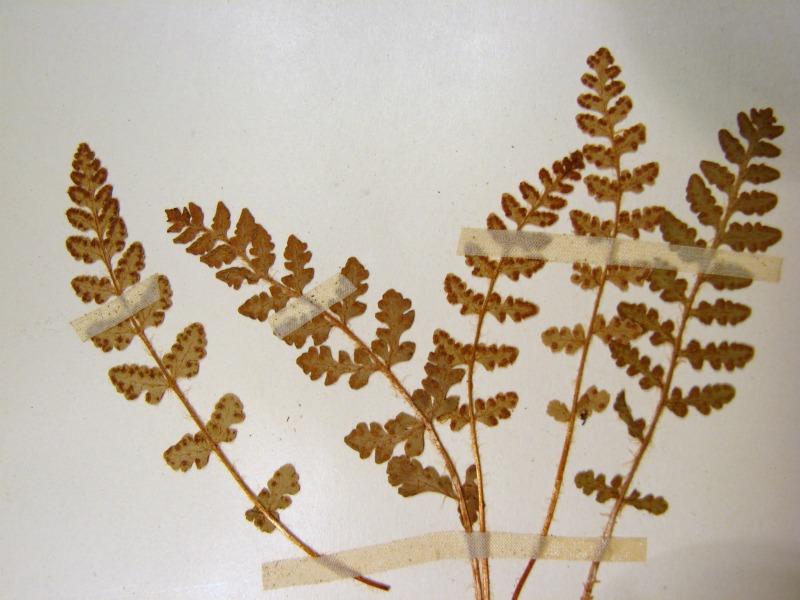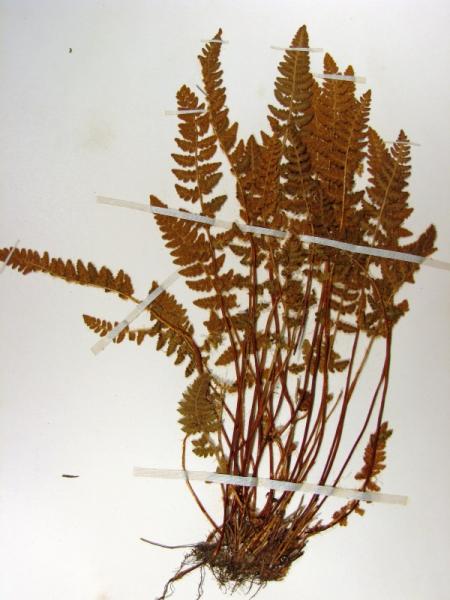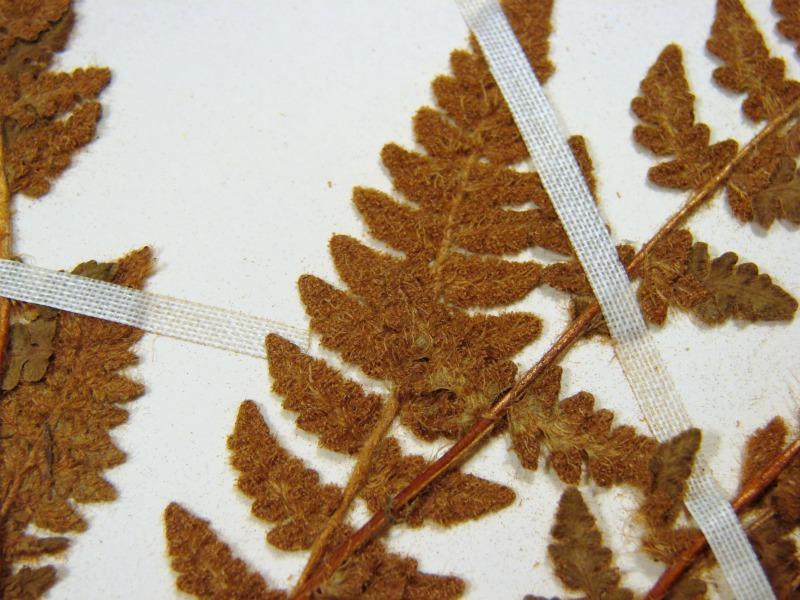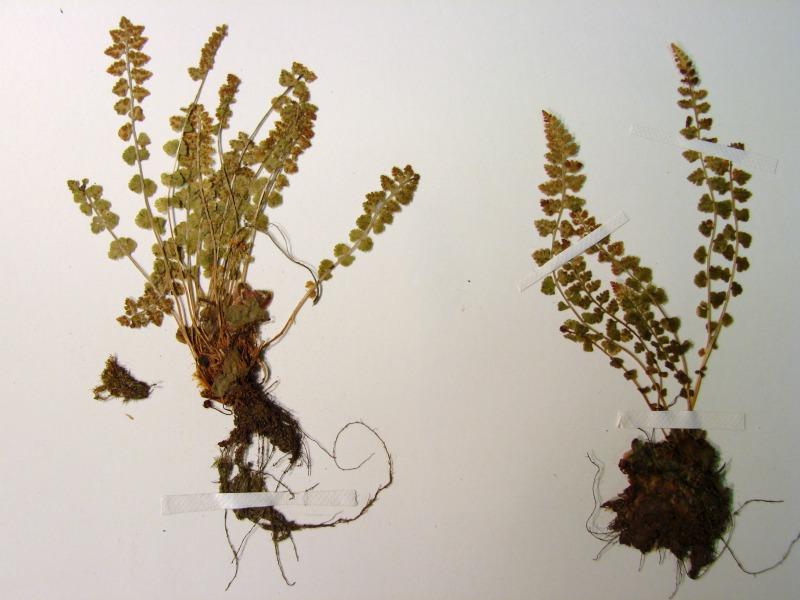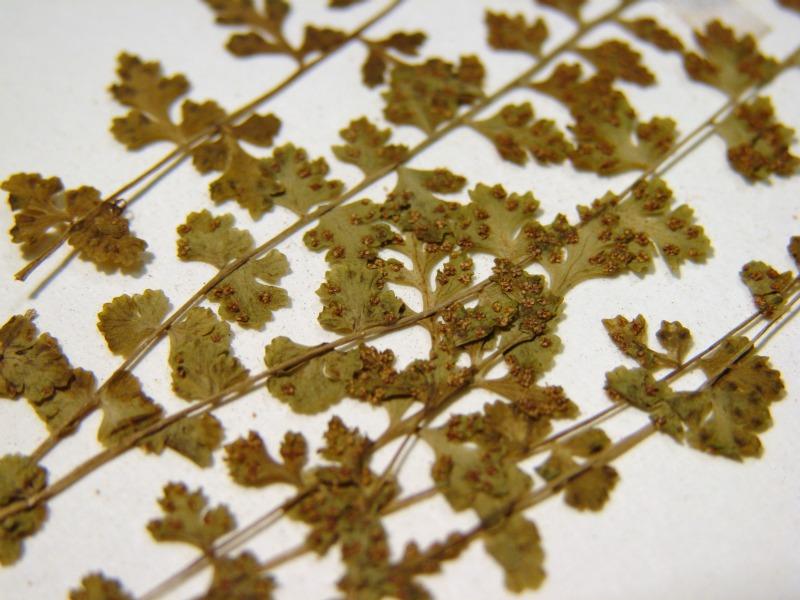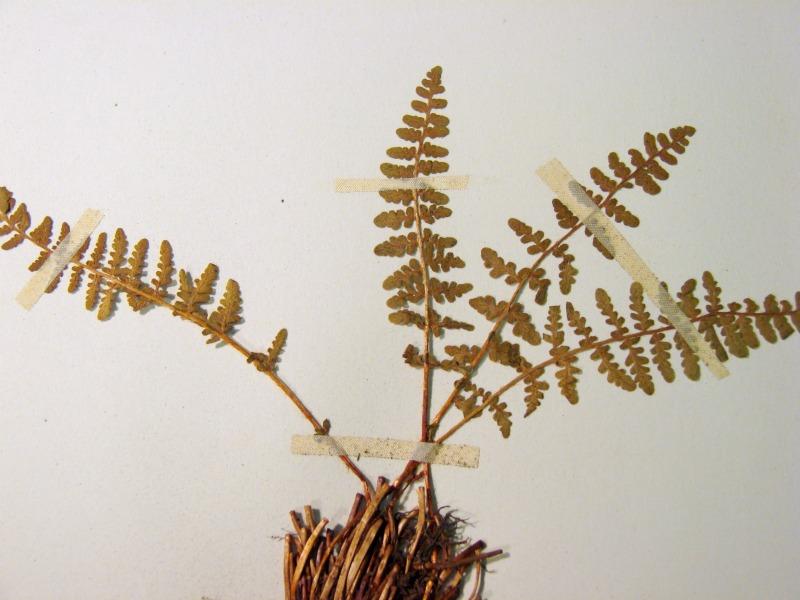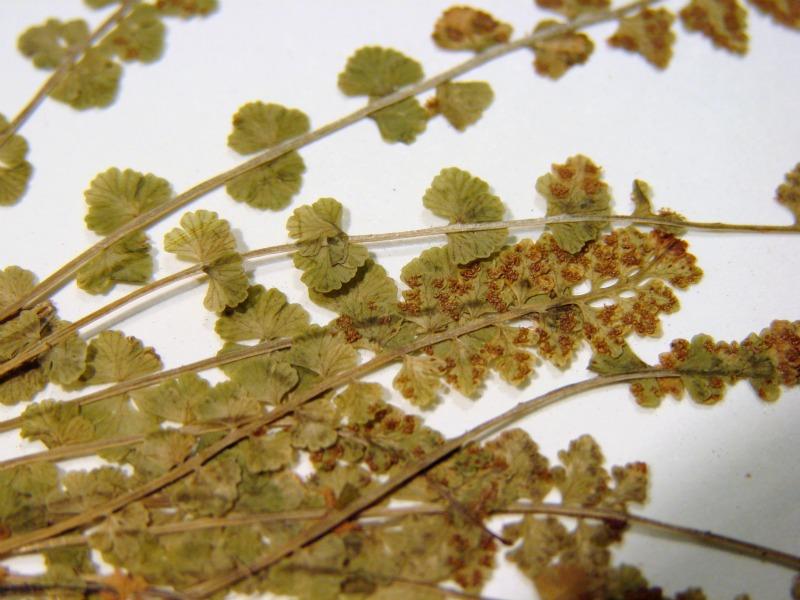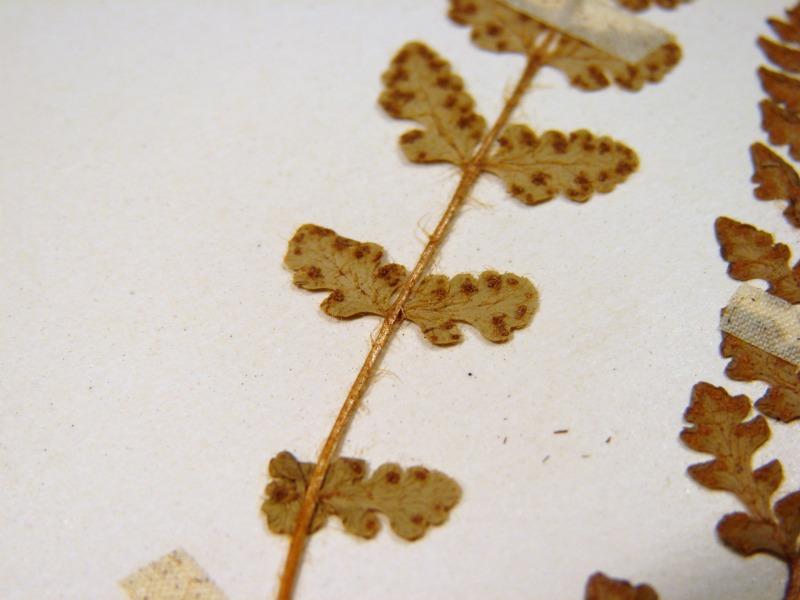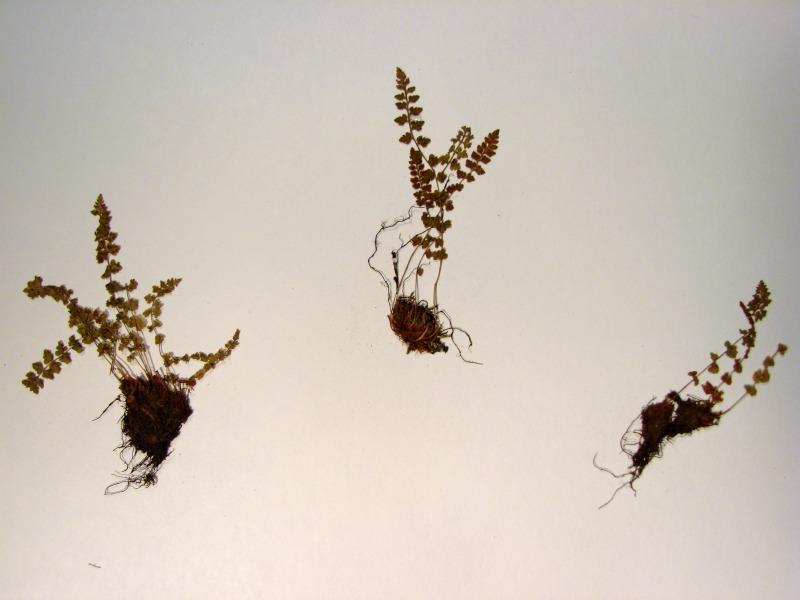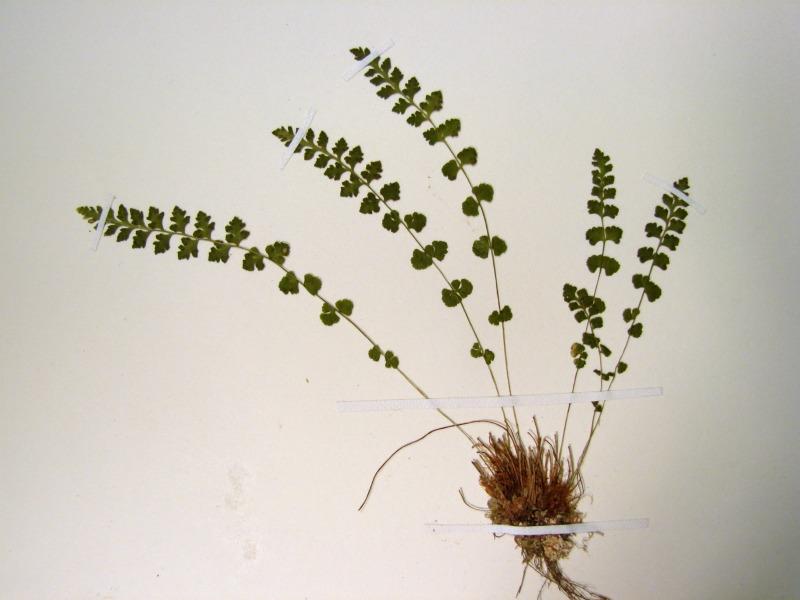Alpine Cliff Fern
Woodsia alpina (Bolton) S.F. Gray
- Class
- Filicopsida (Ferns)
- Family
- Woodsiaceae
- State Protection
- Endangered
Listed as Endangered by New York State: in imminent danger of extirpation in New York. For animals, taking, importation, transportation, or possession is prohibited, except under license or permit. For plants, removal or damage without the consent of the landowner is prohibited.
- Federal Protection
- Not Listed
- State Conservation Status Rank
- S1
Critically Imperiled in New York - Especially vulnerable to disappearing from New York due to extreme rarity or other factors; typically 5 or fewer populations or locations in New York, very few individuals, very restricted range, very few remaining acres (or miles of stream), and/or very steep declines.
- Global Conservation Status Rank
- G4G5
Apparently or Demonstrably Secure globally - Uncommon to common in the world, but not rare; usually widespread, but may be rare in some parts of its range; possibly some cause for long-term concern due to declines or other factors. More information is needed to assign either G4 or G5.
Summary
Did you know?
Like other rare ferns of the Adirondacks, this species was not discovered until the early 20th century, with the earliest record in 1917 from Avalanche Lake. Woodsia alpina along with Woodsia glabella are two of the smallest ferns in our flora. The genus Woodsia is named after Joseph Woods, a 19th century English architect, botanist and geologist (Joseph Woods in Wikipedia, web site accessed 21 November 2007).
State Ranking Justification
There are five existing populations but all of them consist of five or fewer plants, making them extremely vulnerable although they have persisted for many decades. There are four additional historical records which are not very exact, so locating such small plants will be difficult.
Short-term Trends
The existing populations are very small but most have persisted for many decades at this low-level. A couple of recent surveys have failed to relocate two populations but they still cannot be considered extirpated without further attempts. More survey work is needed to understand current trends in light of climate change.
Long-term Trends
This plant was always very rare in New York but the known populations have persisted for many decades. A few historical records still remain to be relocated but the difficulty of surveying such small populations prevent a precise knowledge of trends.
Conservation and Management
Threats
A severe drought or a rock fall could threaten plants since populations are very small and would be unable to recover. Unauthorized rock climbing could damage plants.
Conservation Strategies and Management Practices
Make sure rock climbers do not affect populations. Establish sufficient buffers around populations to preserve the undisturbed aspect and hydrology of their habitat.
Research Needs
Determine if rock climbing is or could affect existing populations and whether it could also be used to search for new populations. Habitat preference studies could determine why this species is so rare in an area where its habitat seems common.
Habitat
Habitat
Its common name describes Woodsia alpina's habitat preferences in New York well. It is found in dry to moist, shaded, acidic cliffs or ledges in the mountains (New York Natural Heritage Program 2007). Rock crevices in cool sites (Gleason and Cronquist 1991). Shaded or exposed, damp to dry slaty or calcareous rocky banks (Fernald 1970).
Associated Ecological Communities
- Cliff community
(guide)
A community that occurs on vertical exposures of resistant, non-calcareous bedrock (such as quartzite, sandstone, or schist) or consolidated material; these cliffs often include ledges and small areas of talus.
- Mountain fir forest
(guide)
A conifer forest that occurs at high elevations in the Catskill and Adirondack mountains, usually at elevations ranging from 3500 to 4500 ft. This forest typically occurs on cool upper slopes that are exposed to wind, at elevations above spruce-northern hardwood forests, usually above mountain spruce fir forest, and below alpine krummholz. The vegetation typically has a low species diversity; the tree layer is almost entirely balsam fir.
- Mountain spruce-fir forest*
(guide)
A conifer forest that occurs at high elevations in the Catskill and Adirondack mountains, usually at elevations ranging from 3000 to 4000 ft. This forest occurs on upper slopes that are somewhat protected from the prevailing westerly winds, usually at elevations above spruce-northern hardwood forests, and below mountain fir forests. The dominant trees are red spruce and balsam fir.
* probable association but not confirmed.
Associated Species
- Adiantum pedatum (maidenhair fern)
- Arabidopsis lyrata
- Asplenium trichomanes
- Campanula rotundifolia (hare-bell)
- Cryptogramma stelleri (slender cliff-brake, Steller's cliff-brake)
- Cystopteris fragilis (fragile fern)
- Phegopteris connectilis (long beech fern)
- Physocarpus opulifolius (ninebark)
- Rhodiola rosea (common roseroot)
- Rubus idaeus
- Saxifraga virginiensis
- Woodsia ilvensis (rusty woodsia, rusty cliff fern)
- Woodsia obtusa
Range
New York State Distribution
In New York this fern is found chiefly in the Adirondacks, with a single site known in the Catskills.
Global Distribution
Woodsia alpina has a circumboreal distribution. In North America it ranges from Alaska across most of Canada, and south to Maine, Vermont, New York, Michigan, and Minnesota.
Identification Comments
General Description
Woodsia alpina is a small fern growing out of rock crevices. The leaves are 6-15 cm long and are sparsely hairy, with brown, lance-shaped scales 4-6 mm long near the base of the petiole. The petioles are jointed, so that the leaf stalks persist after the blades are gone. The blades are linear, only 1-2 cm wide.
Best Life Stage for Proper Identification
The leaves emerge in late May, and the indusia (bearing the spores) form in July and persist until the leaves die in September.
Similar Species
Woodsia glabella and W. ilvensis are the other species of Woodsia in New York which have jointed petioles (and therefore, persistent leaf bases). W. glabella lacks hairs or scales above the leaf bases, and W. ilvensis has more pairs of pinnae segments (4-7) than does Woodsia alpina (2-3).
Best Time to See
The leaves emerge in late May, and the indusia (spore-bearing structures) form in July, persisting until the leaves die in September.
- Vegetative
- Fruiting
The time of year you would expect to find Alpine Cliff Fern vegetative and fruiting in New York.
Alpine Cliff Fern Images
Images of Similar Species
Taxonomy
Alpine Cliff Fern
Woodsia alpina (Bolton) S.F. Gray
- Kingdom Plantae
- Phylum Filicinophyta
- Class Filicopsida
(Ferns)
- Order Polypodiales
- Family Woodsiaceae
- Order Polypodiales
- Class Filicopsida
(Ferns)
- Phylum Filicinophyta
Additional Common Names
- Alpine Woodsia
Synonyms
- Acrostichum alpinum Bolton
Additional Resources
Best Identification Reference
Flora of North America Editorial Committee. 1993. Flora of North America, North of Mexico. Volume 2. Pteridophytes and Gymnosperms. Oxford University Press, New York. 475 pp.
Other References
Crow, Garrett E. 1982. New England's Rare, Threatened, and Endangered Plants. Prepared for the United States Department of Interior, Fish and Wildlife Service, Northeast Region. June 1982.
Fernald, M.L. 1950. Gray's manual of botany. 8th edition. D. Van Nostrand, New York. 1632 pp.
Gleason, Henry A. and A. Cronquist. 1991. Manual of Vascular Plants of Northeastern United States and Adjacent Canada. The New York Botanical Garden, Bronx, New York. 910 pp.
Haines, Arthur and Thomas F. Vining. 1998. Flora of Maine. A Manual for Identification of Native and Naturalized Vascular Plants of Maine.
Holmgren, Noel. 1998. The Illustrated Companion to Gleason and Cronquist's Manual. Illustrations of the Vascular Plants of Northeastern United States and Adjacent Canada. The New York Botanical Garden, Bronx, New York.
Lellinger, David B. 1985. A Field Manual of the ferns and fern-allies of the United States and Canada. Smithsonian Institution, Washington, D.C. 389 Pp.
Mitchell, Richard S. and Charles J. Sheviak. 1981. Rare Plants of New York State. Bull No. 445. New York State Museum. Univ. of New York. State Ed. Department Albany, NY.
New York Natural Heritage Program. 2010. Biotics database. New York Natural Heritage Program. New York State Department of Environmental Conservation. Albany, NY.
New York Natural Heritage Program. 2024. New York Natural Heritage Program Databases. Albany, NY.
Weldy, T. and D. Werier. 2010. New York flora atlas. [S.M. Landry, K.N. Campbell, and L.D. Mabe (original application development), Florida Center for Community Design and Research http://www.fccdr.usf.edu/. University of South Florida http://www.usf.edu/]. New York Flora Association http://newyork.plantatlas.usf.edu/, Albany, New York
Weldy, Troy W. and David Werier. 2005. New York Flora Atlas. [S.M. Landry, K.N. Campbell, and L.D. Mabe (original application development), Florida Center for Community Design and Research. University of South Florida]. New York Flora Association, Albany, NY. Available on the web at (http://newyork.plantatlas.usf.edu/).
Links
About This Guide
Information for this guide was last updated on: August 9, 2011
Please cite this page as:
New York Natural Heritage Program. 2024.
Online Conservation Guide for
Woodsia alpina.
Available from: https://guides.nynhp.org/alpine-cliff-fern/.
Accessed July 26, 2024.

